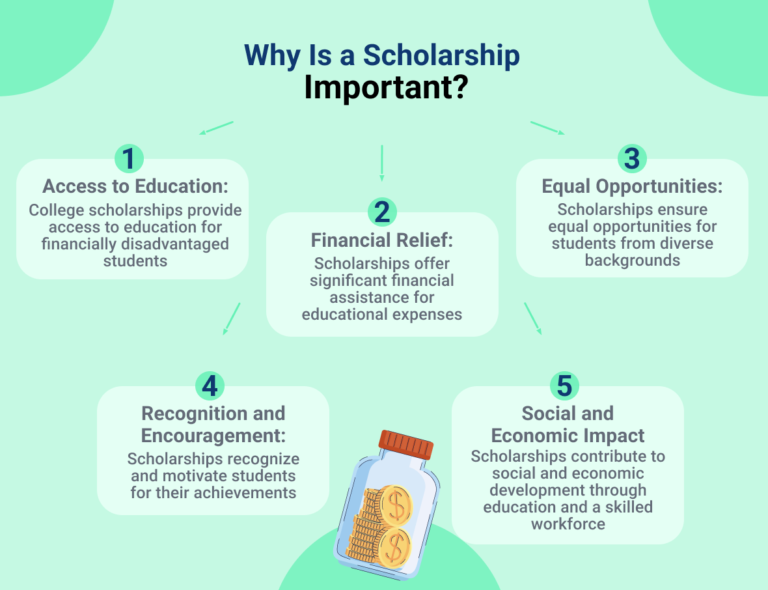“National Scholarship Portal: Streamlining Educational Funding and Empowering India’s Youth”
“National Scholarship Portal: Streamlining Educational Funding and Empowering India’s Youth”.The National Scholarship Portal (NSP) is one of India’s most significant government initiatives aimed at providing centralized access to scholarship schemes from the central and state governments, as well as various organizations, making the process more accessible, transparent, and efficient. The NSP, accessible at scholarships.gov.in, is designed to address the educational funding needs of students, especially those from economically disadvantaged backgrounds, and aims to promote equitable access to education across India. Below is a comprehensive guide on the objectives, features, eligibility criteria, application process, and benefits of the NSP, as well as the different scholarship schemes available.

Table of Contents
1. Overview and Objectives of the National Scholarship Portal (NSP)“National Scholarship Portal: Streamlining Educational Funding and Empowering India’s Youth”
The NSP is a Mission Mode Project under the National e-Governance Plan (NeGP), which seeks to integrate multiple scholarship schemes under a single, unified digital platform. This consolidation is designed to simplify the scholarship application process and provide better tracking, administration, and fund disbursement for educational scholarships in India. Its primary objectives include:
- Centralization and Simplification: By consolidating schemes, the NSP removes the need for multiple applications to different departments, providing a streamlined application and approval process.
- Ensuring Transparency: The NSP uses digital tools to reduce paperwork and manual handling, reducing the chances of corruption or errors in the fund disbursement process.
- Enhancing Accessibility: Students across India can access the portal and its services from any internet-connected device, breaking down geographical and logistical barriers.
- Supporting Inclusivity in Education: With specific schemes targeting marginalized communities, women, and those from economically disadvantaged backgrounds, the NSP fosters educational inclusivity.
These objectives align with India’s broader efforts to improve educational outcomes and make higher education accessible for all, regardless of financial background.”National Scholarship Portal: Streamlining Educational Funding and Empowering India’s Youth”
2. Types of Scholarships Available on the NSP
The NSP offers a variety of scholarships, categorized into Pre-Matric, Post-Matric, Undergraduate, and Postgraduate scholarships. Each category includes scholarships funded by the central and state governments, as well as autonomous bodies such as the University Grants Commission (UGC) and the All India Council for Technical Education (AICTE).
Central Government Scholarships
- Pre-Matric and Post-Matric Scholarships: Targeted at students from minority communities, Scheduled Castes (SC), Scheduled Tribes (ST), and Other Backward Classes (OBC). These scholarships cover tuition fees, school supplies, and maintenance allowances.
- Merit-cum-Means Scholarships: This scheme supports students from economically weaker sections who are pursuing professional and technical courses.
- Top-Class Education Scholarships: For SC, ST, and OBC students in top institutions, this scholarship aims to encourage underprivileged students to access premier educational opportunities.

State Government Scholarships
States have individual scholarship schemes targeting region-specific needs. Examples include:”National Scholarship Portal: Streamlining Educational Funding and Empowering India’s Youth”
- Bihar Chief Minister Scholarship: Provides financial assistance to students in Bihar from weaker economic backgrounds.
- Kerala Suvarna Jubilee Merit Scholarship: Aimed at meritorious students from financially challenged backgrounds in Kerala.
Scholarships by UGC and AICTE
- PG Scholarship for University Rank Holders (UGC): Financial aid for top-ranking undergraduate students pursuing a master’s degree.
- AICTE Pragati Scholarship: A scheme for female students in technical courses, aimed at empowering women in the STEM field.
3. Eligibility Criteria and Documentation
The eligibility requirements for NSP scholarships vary by scheme and are based on factors like educational level, income, domicile, and minority status. Here is a general overview of some common criteria:
- Income-Based Eligibility: Many scholarships require that the applicant’s family income does not exceed a certain threshold. For instance, many state government scholarships are available only to students whose family income is below ₹2 lakh per annum.
- Educational Level: Scholarships are classified based on educational level, with separate schemes for students in primary, secondary, and tertiary education.”National Scholarship Portal: Streamlining Educational Funding and Empowering India’s Youth”
- Social and Minority Status: Certain scholarships are specifically designed for students from SC, ST, OBC, or minority communities.
- Academic Performance: Merit-based scholarships require a minimum percentage of marks, typically above 50%, in the last qualifying examination.
- Documentation: Commonly required documents include income certificates, caste certificates (for minority scholarships), school or college certificates, domicile certificates, and bank details for direct benefit transfer (DBT).
4. NSP Application Process
The NSP application process is relatively straightforward, designed to be user-friendly and accessible from any internet-enabled device. Here is a step-by-step outline of the process:
- Registration: Students first register on the NSP portal using their Aadhaar or a mobile number, creating a unique login ID.
- Filling Out the Application: After logging in, students can select the relevant scholarship scheme(s) they are eligible for, complete the application form, and upload necessary documents.
- Verification and Approval: The application goes through a verification process that involves the educational institution and the state-level authority, ensuring that all data is correct and the applicant meets eligibility criteria.
- Fund Disbursement: Once approved, the scholarship funds are transferred directly to the student’s bank account through the DBT system, making the process transparent and efficient.
5. Benefits and Features of the NSP
The NSP’s digital platform provides numerous benefits, transforming the way scholarships are administered and accessed in India:”National Scholarship Portal: Streamlining Educational Funding and Empowering India’s Youth”
- All-In-One Portal: With hundreds of scholarships available, students can find relevant opportunities without the need to visit multiple websites or offices.
- Real-Time Status Tracking: Students can track their application status from registration to fund disbursement.
- Centralized Database: The NSP maintains a comprehensive database of applicants, making the process faster and more efficient while reducing duplication.
- Grievance Redressal: The portal includes a grievance redressal feature, allowing students to report issues and get support with their applications.
- Direct Benefit Transfer (DBT): By integrating with the DBT system, the NSP ensures timely and accurate fund transfer, significantly reducing fraud and errors.
6. Challenges and Future Prospects
While the NSP has transformed scholarship accessibility in India, there are still some challenges and areas for improvement:

- Digital Literacy: Although the NSP is accessible online, students in rural or remote areas may face challenges in accessing or navigating the platform due to low digital literacy or internet connectivity issues.”National Scholarship Portal: Streamlining Educational Funding and Empowering India’s Youth”
- Verification Delays: Some students experience delays in the verification process, often due to procedural bottlenecks at the institutional or state level.
- Limited Awareness: Awareness of available scholarships and the NSP itself can be limited, especially among marginalized communities.
- Expansion of Schemes: As more students enroll in higher education, the demand for scholarship schemes may increase, requiring additional funding and expanded eligibility criteria.
The NSP is continually evolving, with plans to further streamline processes, integrate with more educational institutions, and ensure that scholarships reach every eligible student. Government initiatives to increase digital literacy and internet accessibility are likely to complement these efforts, enhancing NSP’s reach and effectiveness.
7. Additional Resources: Vidya Lakshmi Portal for Educational Loans
To further support students in higher education, the Vidya Lakshmi Portal provides a centralized platform for students seeking educational loans. This portal complements the NSP by helping students explore loan options alongside scholarship opportunities. Developed by NSDL under the Ministry of Finance, the Vidya Lakshmi Portal simplifies the loan application process, allowing students to apply to multiple banks with a single application and track the status of their loan applications.
This initiative helps students access comprehensive financial support, allowing them to pursue higher education without financial burdens.
8. Conclusion: The Role of NSP in Shaping India’s Educational Landscape
The National Scholarship Portal is more than just a platform for financial assistance; it is a cornerstone of India’s commitment to inclusive education. By breaking down financial barriers and promoting accessibility, the NSP is playing a significant role in empowering India’s youth, fostering academic potential, and bridging gaps in educational access. Through constant updates and improvements, the NSP continues to advance its mission, contributing to a future where quality education is within reach for every student in India.”National Scholarship Portal: Streamlining Educational Funding and Empowering India’s Youth”
For further details on eligibility, application deadlines, and more, students are encouraged to visit the official https://upscholership.online/







